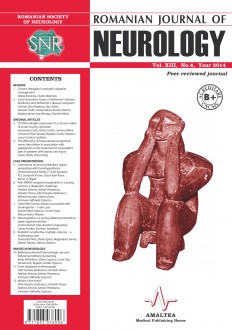SELECT ISSUE

Indexed

| |

|
|
|
| |
|
|
|

|
|
|
|
|
|
| |
|
|
HIGHLIGHTS
National Awards “Science and Research”
NEW! RJN has announced the annually National Award for "Science and Research" for the best scientific articles published throughout the year in the official journal.
Read the Recommendations for the Conduct, Reporting, Editing, and Publication of Scholarly work in Medical Journals.
The published medical research literature is a global public good. Medical journal editors have a social responsibility to promote global health by publishing, whenever possible, research that furthers health worldwide.
WHERE IS THE BRAIN?
Vlad Claudiu Stefanescu, Daniela Trasca, Adelina Simona Serban-Pereteanu and Inimioara Mihaela Cojocaru
We present the CT of a 26-year-old female patient with infant encephalopathy and hydrocephalus, referred to the Neurology emergency room from "Prof. Dr. Matei Bals" Institute of Infectious Diseases, where she was brought for high temperature and increased frequency of tonic-clonic seizures. Physical examination revealed neck stiffness, tetramelic hypotrophy and flexion of the upper limbs, extension, and internal rotation of the lower limbs, fever 38 degrees Celsius. Brain CT revealed massive hydrocephalus.
Full text | PDF
